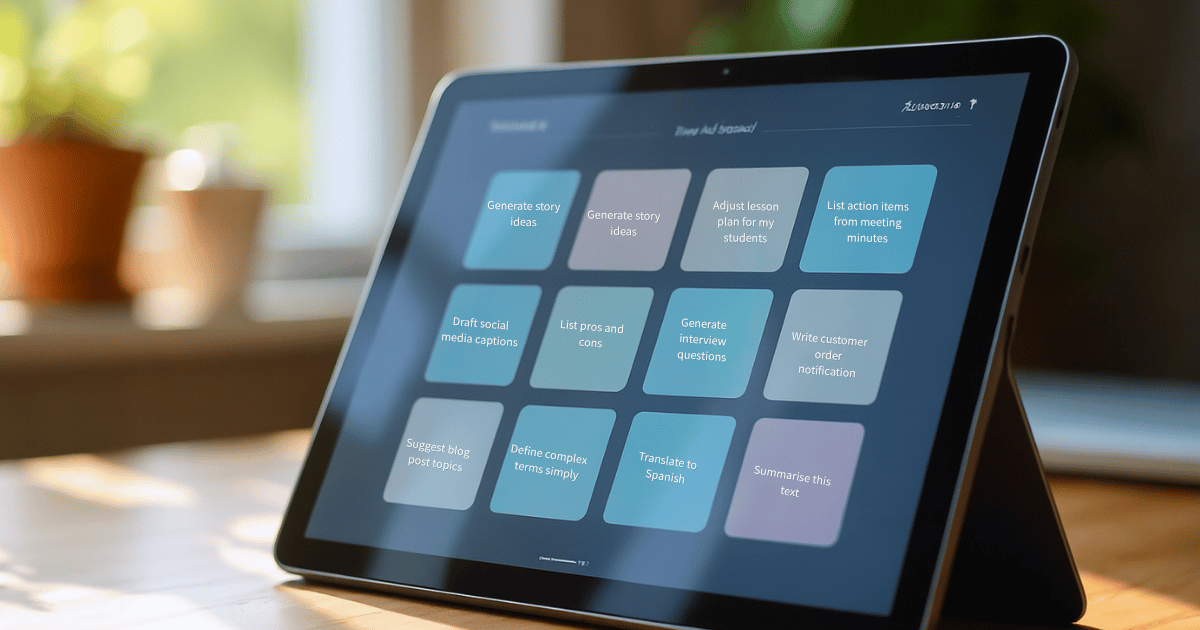Why training your AI assistant matters (and why it’s easier than you think)
Treat your AI like a new team member — here’s how to get the best from it.
The “aha” moment that changed how I use AI
A few months ago, I was using ChatGPT to help with writing some instructions for a reference guide I’m compiling for one of my hobbies. It was quick and helpful, but the results always felt… generic. It would draft something decent, but I’d spend ages editing it to match my style.
One day, I decided to treat it like I would a new assistant at work: explain my goals, tone, and preferences. I shared examples of previous examples of my own writing and gave instructions about how I like things worded. The difference was immediate — instead of generic content, I got drafts that felt like me.
That’s when I realised: AI isn’t plug-and-play magic. It’s more like a smart new hire who does their best work once you give them context and feedback.
Why training matters
AI tools like ChatGPT, Google Gemini and Claude are incredibly powerful, but they don’t automatically know you. By spending some time on training, your AI assistant will:
Save you time by reducing rework.
Produce results closer to your brand or personal style.
Help AI understand your priorities and recurring tasks.
Think of it as onboarding a new team member: the more context you provide, the more valuable they become.
What “training” really means
When I say “train your AI”, I’m not talking about coding or building a new AI model. Instead, it’s about:
Sharing examples of what good work looks like.
Providing clear instructions about your goals, audience, and tone.
Saving preferences so you don’t repeat yourself every time (e.g., using memory features or prompt templates).
This kind of training is quick and doesn’t require technical skills — just a little preparation.
Quick ways to train ChatGPT for your needs
Tell it who you are and what you need: Example: “I run a weekly team meeting and need agendas in a friendly but concise style.”
Share examples: Paste in an email, report, or blog post you like and ask ChatGPT to match the tone.
Build a simple prompt library: Save a few “go-to” prompts for recurring tasks like drafting emails or creating summaries.
Give feedback: If the response isn’t right, say what to change — tone, length, format. The AI will adapt as you go.
Advanced training (optional)
For most people, light training is enough. But if you work in a business with lots of repetitive tasks or unique data, there are options like custom GPTs or integrating with your own datasets. These usually need IT support, but they can be powerful for things like customer support or managing internal documents.
(We’ll explore those advanced options in another post — no need to worry about them now.)
Quick start checklist
Decide what tasks you want AI to help with.
Gather 1–2 examples of what “good” looks like.
Save one or two favourite prompts to reuse.
Try it for one real task this week and refine as you go.
Final thought
Training your AI assistant isn’t about turning you into an AI whisperer — it’s about giving your digital sidekick a fighting chance to actually sound like you instead of a corporate brochure. Treat it like a new team member: a little context, a few examples, and suddenly you’ve turned a clever piece of software into a real productivity partner. The best part? It only takes a few minutes to start.
What about you? Have you tried “training” an AI tool with your own preferences or examples? Did it make a difference? Hit reply or comment — I’d love to hear how it went for you.




